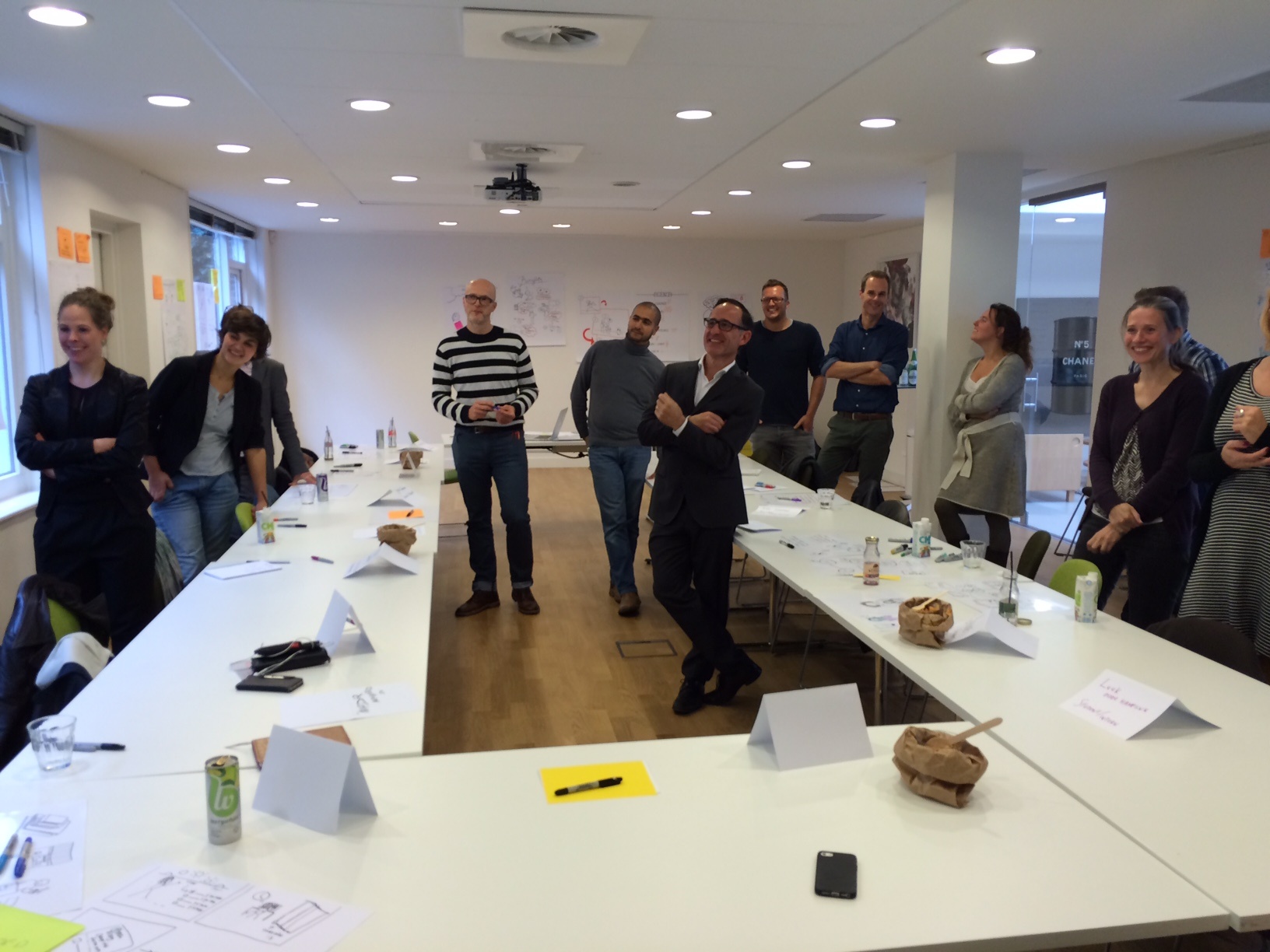In a results driven world where efficiency seems to be the highest priority, we work hard with a clear target in mind. After all, time is money, and the clients want to have a concrete outcome as soon as possible. This tendency doesn’t seem to be exclusive for our professional lives but also oozes into our personal day-to-day activities. Think of the apps we have installed on our smartphones to “make our lives easier.” How often do we take a few hours to just reflect on what we are doing, where we are heading in life, or simply pay attention to our surroundings? Do you feel this doesn’t happen often, if ever?
Following the successful example from our Portland office, the latest Visual Thinking School session in Amsterdam centred on slow design. What happens if we take a slower, offline, and more considered approach to life, and design in particular? Using “The Slow Design Principles” [1] we stepped through a series of exercises to rethink our design processes by considering the social, cultural, and environmental sustainability opportunities of work.
The principle of slow design focuses on everyday experiences that are missed or overlooked nowadays. A clear example is using WhatsApp instead of meeting friends in real life or calling them. Another example is thinking about our encounters with the capricious Dutch weather. Weather prediction apps reduce the times we get soaking wet, but at a cost; our confrontations with reality have become less and less direct as they are filtered by layers of abstraction through information and apps.

To start, we asked our attendees to share their favourite app, and then come up with an alternative process, which would achieve the same results as the app but in an offline world. How can we work around the service offered by the app thus creating awareness of the steps and aspects of life replaced by the app, of its implications (i.e. what they miss in their surroundings because of using the app), and of the advantages of the new, appless, and sometimes old school, approach?
Essentially, we exchanged time for other benefits.
After observing and sharing the differences, we identified the advantages and disadvantages and started to experiment with combinations of these concepts, guided by the next principle, expansion. By thinking broader and beyond the initial objective, we came across a few interesting ideas; inspired by the combination of the service of the NS app (from the Dutch railway) and again the weather prediction app, for example, we envisioned a complete new approach in which train passengers inform each other directly of the weather conditions at their destination, creating opportunities for social interaction. Another proposal was centred on a mix of Pinterest and the alarm clock, resulting in a grid on the wall to track images and visualise progression of projects.


We ended by passing our slow design concepts to other teams, thinking of our solutions as a seed we planted, an idea we set free to evolve and grow. Engagement here was key as we all started working with each other’s concepts, taking them as the starting point of a new concept.

Reviewing the final concepts, we revealed that the apps we use in our smart-phones tend to be point-solutions, addressing only one specific need of life rather than creating a combination of complimentary benefits. The biggest benefit lost is engagement with other people. We also realised that by replacing apps with a slow design approach, the total benefits were often higher than the efficiency offered by a single app.
To sum up slow design leads to the notion that the time we win by being efficient and pragmatic, by making use of apps, for example, correlates to the loss of time for (face-to-face) contact with others and the world around us. Similarly important, the session confirmed that our ability of being inventive is particularly addressed by a slow approach, leaving us with a firm intention to implement slow design principles in our professional–and personal–lives from now on.
[1] Strauss, Carolyn F. and Alastair Fuad-Luke. “Slow Design Principles: A New Interrogative and Reflexive Tool for Design Research and Practice.” New York: slowLab, Inc., 2006.